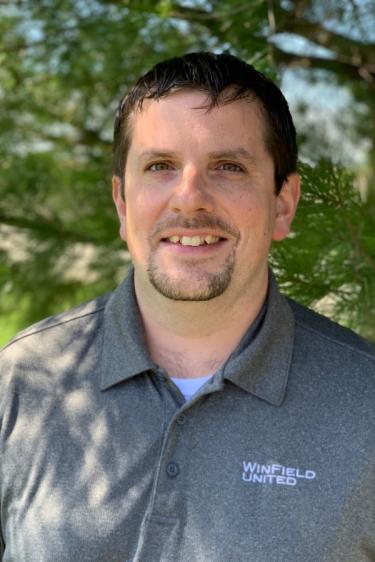ILSOYADVISOR POST
Weed Control Using The Xtend Herbicide System
*DISCLAIMER: The Illinois Soybean Association does not make product recommendations and is supportive of the safe use of approved technologies available to farmers.*
Dicamba tolerant (Roundup Ready 2 Xtend® and XtendFlex®) soybeans are not new, but the labels for approved dicamba formulations continue to evolve. As in-crop applications of herbicide products like XtendiMax®, Engenia®, and Tavium® begin for the 2021 season, let’s review a few of the key label requirements and application best practices.
First introduced in 2016, Roundup Ready 2 Xtend® soybeans (tolerance to glyphosate and dicamba) and the more recent XtendFlex® trait platform (tolerance to glyphosate, dicamba, and glufosinate) have grown to represent a significant portion of U.S. and Illinois soybean acres. Over these past five years, the industry has learned much about applying approved dicamba formulations for post-emergence weed control on dicamba tolerant soybean acres. After the EPA registrations of certain approved dicamba formulations (Xtendimax® and Engenia®) were vacated in June 2020, these products received new five-year labels on October 27, 2020 which impact applications made in 2021. There are several significant changes between the previous labels issued in 2018 and the current labels published at the end of 2020, but let’s focus on three of the most important factors that will influence dicamba applications in the coming weeks:
1. When can dicamba be applied?
The current federal labels state that applications can be made up to and including June 30, however, the Illinois Department of Agriculture (IDOA) has continued its state specific cut-off date restriction of June 20. Additionally, specific to Illinois: “a pesticide containing dicamba shall not be applied on soybeans if the air temperature at the field at the time of application is over 85 degrees Fahrenheit or if the National Weather Service's forecasted high temperature for the nearest available location for the day of application exceeds 85 degrees Fahrenheit.” Illinois specific dicamba restrictions can be found at: https://www2.illinois.gov/sites/agr/Pesticides/Pages/Dicamba.aspx.
Besides cut-off dates and temperature restrictions that impact Illinois applicators, also keep in mind the growth stage of the crop. Labels for XtendiMax® and Engenia® prohibit applications after the R1 (beginning bloom) stage, while Tavium®, which also includes S-metolachlor, can be applied through V4. Although many soybean fields in Illinois may not begin to flower until later in June near the cut-off date, keep in mind that early planted soybeans (late-March through mid-April) may start to flower earlier in June especially as temperatures and growing degree unit accumulation increase.
2. Where can dicamba be applied?
The answer to this question may seem obvious (fields planted to Roundup Ready 2 Xtend® or XtendFlex® varieties), but buffer requirements can be one of the most confusing aspects of making in-crop dicamba applications. First, let’s start with whether your field is in an area designated as an Endangered Species Act county. These counties contain endangered plant species that could be negatively impacted by off-target movement of dicamba. For Illinois, eighteen counties are currently designated as ESA areas. These include Bureau, Effingham, Fayette, Fulton, Greene, Grundy, Kankakee, LaSalle, Livingston, Madison, Marion, Morgan, Peoria, Pike, Schuyler, St. Clair, Tazewell, and Will. If your field is in one of these counties, the downwind buffer distance is 310 feet, and the omnidirectional buffer distance is 57 feet. If your field is in a non-ESA designated county, the downwind buffer distance is 240 feet and there is no omnidirectional buffer requirement.
Beside buffer distances, the federal labels state that applications cannot be made if the wind is blowing toward adjacent sensitive crops. Although not an exhaustive list, non-dicamba-tolerant soybeans, vegetable crops, grape vines, and fruit trees are among the most encountered sensitive crops in Illinois. IDOA further restricts applications if wind is blowing toward an adjacent Illinois Nature Preserves Commission site or residential area.
3. Which adjuvants are required?
Proper adjuvant selection is an important decision for optimizing the efficacy of an herbicide application and reducing off-target movement. For approved dicamba formulations, there are three important adjuvant considerations:
- Non-ammonium sulfate (AMS) containing water conditioners. In-crop applications of dicamba may be made with herbicide active ingredients like glyphosate that require a water conditioner to improve efficacy. Although not a new label requirement, water conditioning adjuvants cannot contain AMS due to the potential for increased dicamba volatility.
- Drift reducing adjuvants (DRA). Approved DRA products are required for all applications unless noted by the respective product’s tank mix approval website.
- Volatility reducing agents (VRA). The requirement for an approved VRA is new to the current federal labels. These products are designed to buffer spray tank pH and prevent the formation of volatile forms of dicamba. For 2021, there are two VRA chemistries available in the market. The first is VaporGrip® Xtra Agent from Bayer. You will find this chemistry in many private label products from various crop protection distribution companies and national retailers. The second VRA product is Sentris™ from BASF.
Most importantly, always refer to and keep up to date with constantly changing tank mix approvals for your dicamba product of choice. Current tank mix approvals can be found at:
- XtendiMax®: https://www.xtendimaxapplicationrequirements.com/#/search
- Engenia®: https://www.engeniaherbicide.com/tank-mix.html
- Tavium®: https://www.syngenta-us.com/herbicides/tavium-tank-mixes
So, what can I do?
Dicamba tolerant soybeans are one option for Illinois soybean farmers to effectively control broadleaf weeds and implement herbicide resistance management strategies on their farm. Being a good steward of this technology requires staying abreast of periodic label changes and state-specific restrictions. Before you get started on making in-crop applications this season, please take a moment to review the label requirements for the product that you have chosen or have a proactive conversation with your custom applicator to make sure that they have all the information that they need for an effective and on-label application.





Comments
Add new comment